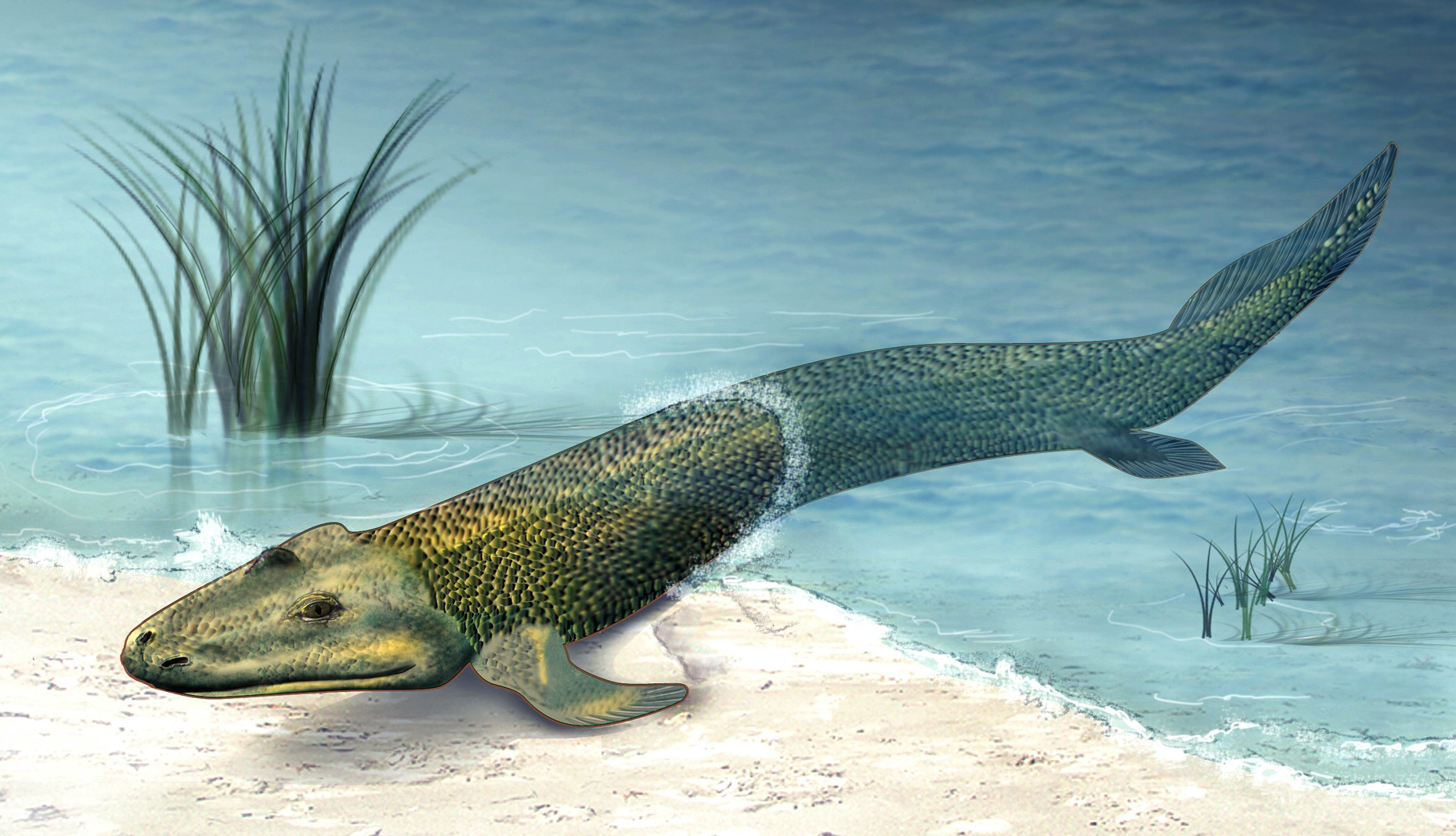From Sea to Land
(Published in the newspaper Amigoe on the 18th of December 2024)
We’re in a climate crisis, and it’s all our fault. Is this the first time humans have caused such a massive crisis? How did we even get here? And how did we evolve into the modern humans we are today? We’re mammals, right? How did mammals come about? And how did the first life form in the sea? All these questions are answered in this series. In the first part, we’ll explore how life from the sea finally made its way to land. Now, modern humans live on land, but we haven’t completely left the sea behind.
The origin of life in the sea
The Earth is about 4.5 billion years old. The first signs of life appeared about 3.5 billion years ago in the ocean. For about 3 billion years, life was just tiny single-celled creatures in the sea. At first, the air was mostly carbon dioxide, nitrogen, and methane. There was no oxygen.
But some organisms started making oxygen from carbon dioxide. Over time, the oxygen in the air went up. This also made the ozone layer, which protects life from harmful UV rays. That was crucial for life to move onto land. About 0.5 billion years ago, a bunch of different kinds of life suddenly appeared in the ocean, including fish, the first animals with spines. These animals are called vertebrates.
Life went onto land
During this time, tiny creatures like algae were already living on land. About 0.4 billion years ago, some really simple plants, millipedes (they have two pairs of legs per segment, unlike centipedes which have one), and arachnids also started living on land. And guess what? The first fish came ashore not too long after that!
How did this happen? These fish were like little underwater acrobats! They lived in shallow water and could breathe air too. They hunted for small prey in the shallow water, and guess what? Their fins transformed into legs! This allowed them to chase their prey on the waterline, making them super efficient hunters.
These fish that lived on land evolved into the first amphibians. Amphibians have a skin that lets them breathe through their skin, just like they breathe through their lungs. This skin also lets them absorb water quickly. Because they dry out on land quickly they needed to stay close to water. Amphibians could live on land, but they had to go to the sea to have babies. They laid their eggs in the water, and the eggs didn’t have a shell, so they could only survive in the water. The babies that hatched had gills so they could only live in the sea. As they grew up, they developed lungs and legs, so they could live on land. Modern amphibians include frogs, toads, and salamanders.

From sea to land. (Foto Credits: Naturalis)
The first reptiles
Reptiles are a group of animals that evolved from amphibians. They mostly live on land and breathe air, unlike amphibians. Unlike amphibians, reptiles have scales. They’re cold-blooded, so they can’t control their own body temperature. Reptiles first appeared about 0.3 billion years ago.
Reptiles live all over the world and no longer need the sea to have babies. How did these reptiles manage to leave the sea? Well, it’s all thanks to this amazing invention: the egg with a shell! The shell keeps the egg from drying out, so it’s like the egg is living in a little bit of the ocean.
Dinosaurs and mammals
The first reptiles split into two groups: mammals and the group that includes dinosaurs, crocodiles, lizards, snakes, turtles, and birds. The first mammals appeared around 0.2 billion years ago. They’re warm-blooded, which means they can control their body temperature. Unlike reptiles, mammals do not lay eggs but give birth to live young. We just learned that a moist environment is crucial for the fetus’s development. So, in mammals, the fetus is protected by a bag of amniotic fluid in the uterus. This bag keeps the unborn baby from drying out. This shows that mammals, and humans, haven’t completely left the marine environment when it comes to reproduction.
Dinosaurs were the kings of the jungle for a whopping 186 million years! From 250 million years ago to 66 million years ago, they ruled the Earth. But guess what? That all changed suddenly 66 million years ago. That’s when mammals stepped up and took over. This story of how mammals became the dominant species on our planet is the topic of the next article.
1. From Sea to Land